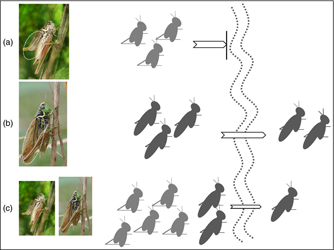Dispersal barriers drive many important ecological processes (eg population viability, speciation). Such barriers are dynamic features that can vary in strength and location, and can be affected by human intervention and environmental variation; however, they are rarely taken into account explicitly in global change studies. It is important to be able to predict where they will appear or disappear, to consider their impact on species' distributions and gene flow, and to manage species or landscapes to mitigate their impacts. Management options that account for population genetics need to be developed to help maintain the adaptive capacity of species when barriers change. informacion[at]ebd.csic.es:Caplat et al (2016) Looking beyond the mountain: dispersal barriers in a changing world. Front Ecol Environ 2016; 14(5): 261–268, doi:10.1002/fee.1280
http://onlinelibrary.wiley.com/doi/10.1002/fee.1280/full

 Las altas temperaturas están provocando que las lagunas y las marismas de Doñana pierdan agua rápidamente
Las altas temperaturas están provocando que las lagunas y las marismas de Doñana pierdan agua rápidamente




